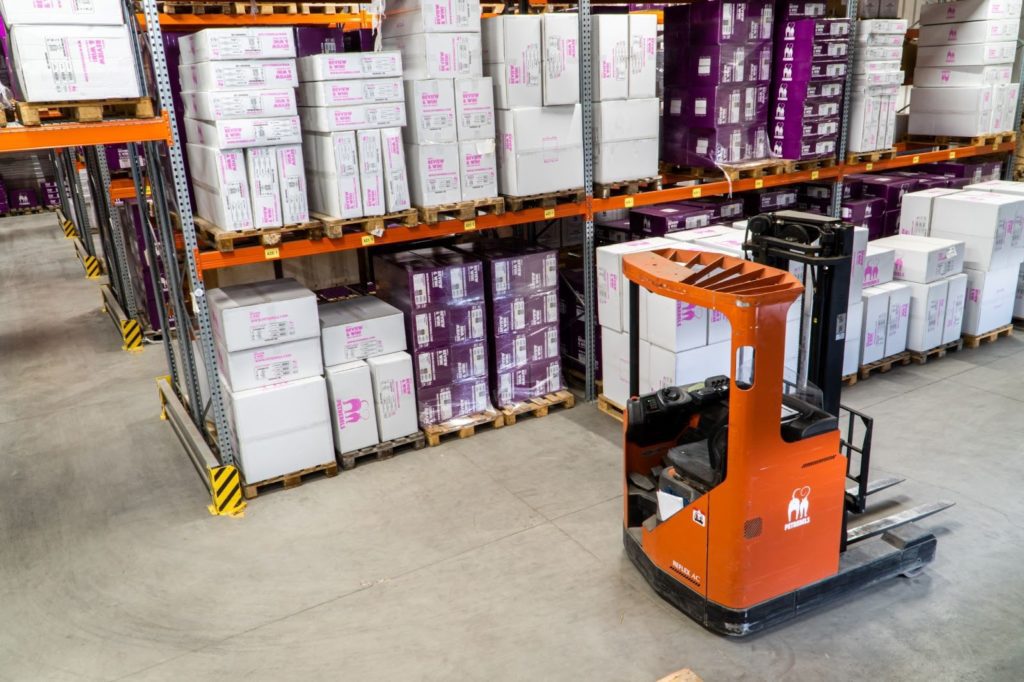 Almost every business holds inventory to some capacity; service-based industries might store less than product-based retailers, but even service-based sectors may need to store essential items or tools for staff members. Tracking and managing your inventory is crucial if you want to remain profitable and analyze the inflows and outflows of stock in your business.
Almost every business holds inventory to some capacity; service-based industries might store less than product-based retailers, but even service-based sectors may need to store essential items or tools for staff members. Tracking and managing your inventory is crucial if you want to remain profitable and analyze the inflows and outflows of stock in your business.
The main thing you should take care of is the amount of stock you’re carrying. Having too much inventory for customer demand can be cumbersome, and you will not be able to service their needs. It’s also vital to track and manage inventory to avoid theft. When you’re aware of your inventory list, you’re better equipped to chase losses.
The inventory of a business is, after all, your most important asset, so it makes sense to keep on top of your most valuable possessions and inventory control systems. This article will outline some ways to stay in control of your inventory management.
Types of Inventory
Before we get into the details of managing your inventory, let’s go through the different types of stock. The kind of inventory and purpose will vary between businesses. Here are some of the most common types of inventory.
- Raw Materials – Raw materials are usually held in businesses in the manufacturing industry. The raw materials are utilized to create a product for other companies or consumers.
- Work in Progress – Work in progress is any items moving between raw materials and finished goods. Because inventory recording can happen at any time, we must consider things still in production.
- Finished Goods – In manufacturing, the finished goods are any items that have completed production and are ready for sale. Although the term is common in manufacturing, it’s also applicable to retail, as all the types of items sold are prepared for sale.
- Maintenance, Repair, and Operating (MRO) Inventory – MRO Inventory is any inventory used in your day-to-day operations. This doesn’t include goods to be used for materials or sold. Typically this can be tools, safety equipment, lubricant and things of this nature.
- Packing Materials – These are required to store, transport or present stock to customers and clients. Depending on your industry, this can vary from cardboard boxes to shipping containers.
Inventory Management
Inventory is managed in many different ways depending on what industry you’re working in; if you’re in retail, you will be managing diverse inventory compared to the construction industry. We must understand that all sectors have different approaches, but many principles will remain the same. These tips will hopefully cover your bases no matter what business you’re running so you can effectively keep track of your most important assets.
Embrace Inventory Management
This advice isn’t so much instructional but something significant and something that new business owners tend to overlook. We must change our mindset if we want to start managing our inventory correctly. We often simply think about profits and the bottom line or serving our customers without keeping an eye on the basics of our business.
Running a successful business without paying close attention to inventory is possible, but you’ll hit a roadblock at some point. This may present as a lack, excess stock, or even missing inventory items. In some cases, due to lack of attention, assets go missing from businesses without notice from the owners. Suppose we want to improve our tracking of inventory. In that case, we need to prioritize this aspect of our business, which means more attention and more staff or manpower in inventory management.
Strengthen Your Supply Chain
One of the most important things you can do is strengthen your relationship with suppliers and ensure you have contingencies if these suppliers miss your demands. Nothing is worse in a business than a lack of inventory and an inability to serve your customers. If we strengthen our supply chain, we can easily avoid these contingencies and be better equipped for emergencies.
Use Automated Systems & Storage Solutions
The best thing about being in business now is that we have so much access to technology. We can utilize technologies. Many owners are missing out on the advantages of automation. If you have these things in the marketplace that can likely save you money and reduce the need for manpower, why not use them.
We’re not only talking about physical systems but also digital systems and other inventory control systems. We can utilize many types of software to track and trace inventory that does a great job of automating the process. It’s as easy as checking these programs and looking at the numbers. We also have access to automated storage solutions that can hold expensive inventory items that are only accessible with an authorized identity. Things like this will assist in reducing theft and keeping an eye on staff usage.
Conclusion
We have gone through the types of inventory and some solutions and insights on managing our inventory in the modern world. We’re blessed to have access to the technology and the know-how of best practices to keep the wheels of our business running the best we can. Do your business and customers a favor by following these tips; all the best.

